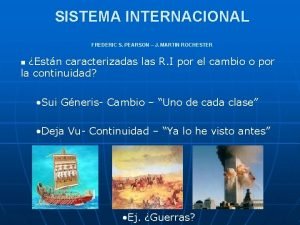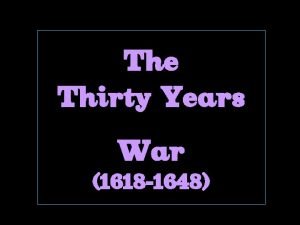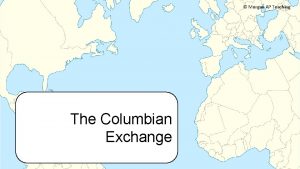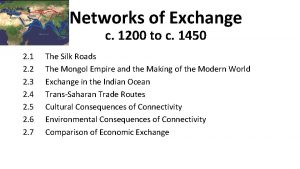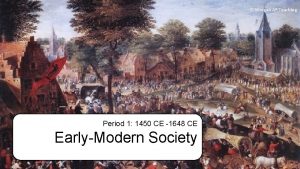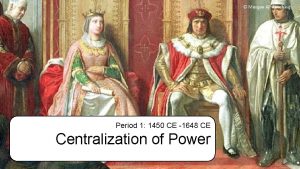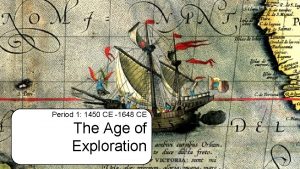Morgan AP Teaching Period 1 1450 CE 1648





- Slides: 5

© Morgan AP Teaching Period 1: 1450 CE -1648 CE State Control of Religion

© Morgan AP Teaching Henry VIII of England • One of the best examples of monarchs reforming religion to greater control their country and its morals/religion is Henry VIII of England • In 1534 Henry VIII, King of England, joined the Protestant movement, and started his own church: The Church of England • Henry’s ambitions to form a unique Protestant Church were not like Luther or Calvin who opposed Catholic views—it was so he could get a divorce • As such, Henry did not care about theological issues and differences Luther and Calvin had with Catholicism • So while the Anglican Church (Church of England) is considered Protestant, it operated very similarly to the Catholic Church, with the king at the head —not the pope

© Morgan AP Teaching Elizabeth I of England • Another example of a monarch bringing about religious reforms to greater control their state was Elizabeth I of England- Henry VIII’s daughter • After Henry VIII, Queen Mary I of England returned England to a Catholic nation, and attempted to imprison and execute many of the new Anglicans • However, after her short reign and imprisonment, Henry’s daughter, Elizabeth I took over and re-established the new Church of England • Her two important and controlling reforms were: • The Act of Supremacy – made Elizabeth I the head of the Church of England • The Act of Uniformity – required all England attend church on Sunday at an Anglican Church with the Book of Common Prayer

© Morgan AP Teaching The Puritans • Like the Huguenots in France and the Calvinists in the Netherlands, a group in England called the Puritans also used religious conflict to challenge their monarch • The Puritans were a radical group of Protestants in England that felt the Church of England was far too similar to the Roman Catholic Church • It had very similar traditions and structure, and the Puritans felt very strongly that the Anglican Church needed to be more like its Lutheran and Calvinist counterparts • Since they were so critical of the Anglican Church, they were often persecuted by the government, with harsh laws and unfair treatment against their group • The did, however, resist and continue their faith, eventually leaving England due to extensive persecution and violence for the Netherlands and Americas (pilgrims)

© Morgan AP Teaching Religious Pluralism • While many states attempted to control religion, and many groups like the Puritans, Calvinists, and Anabaptists resisted, some areas took a different approach • Once the Spanish were defeated in the Netherlands in 1648, the Dutch parliament voted for religious pluralism (freedom) in the new nation • Rather than worry about enforcing Calvinism or Catholicism, the Dutch simply allowed general religious freedom to maintain peace and unity • Likewise, earlier in France, Henry of Navarre had already allowed religious pluralism in the Kingdom of France with the Edict of Nantes • Both of these were early European examples of religious pluralism to maintain peace

